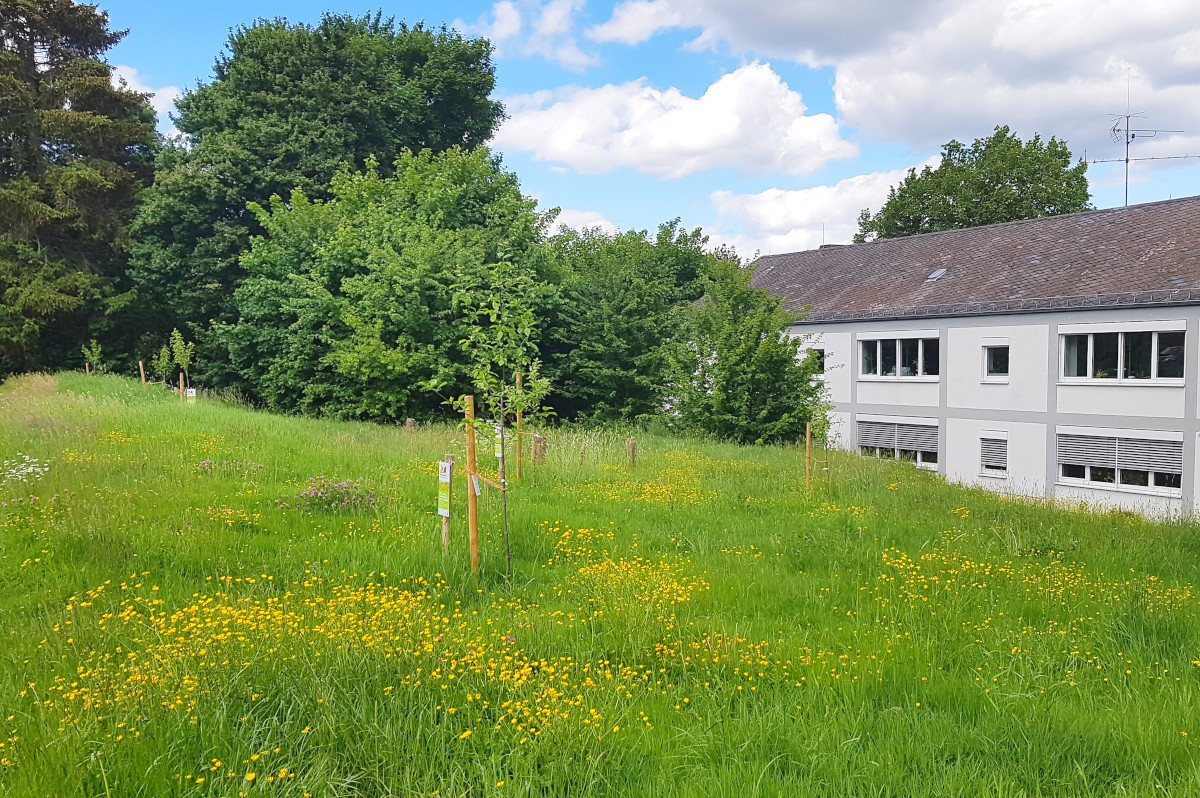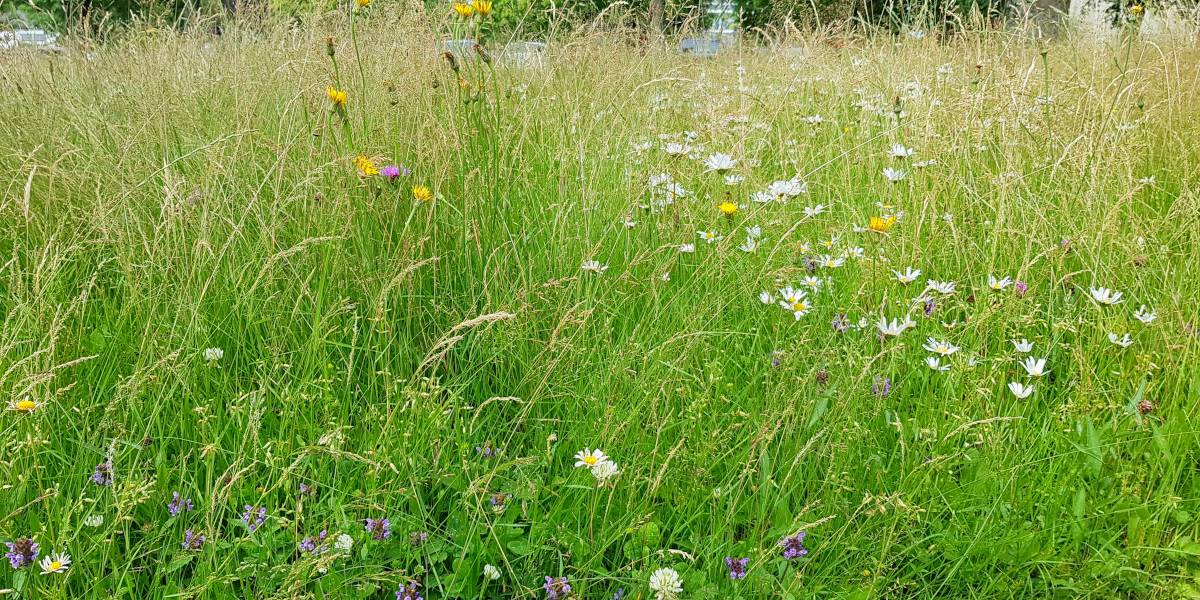Grassland is one of the most landscape-defining biotopes in our Volcanic Eifel. In addition to intensively used multi-cut meadows, we also find species-rich grassland in our natural area. The diverse seas of flowers on a green background inspire admiration in most viewers. In contrast to this are the inner-city lawns. Here, a lawn that is kept short and regularly “cleanly” mowed is what many people expect.
There is huge ecological potential hidden behind these areas. Just imagine if all areas, especially public green spaces that are not really used (so-called “eh-da” areas), were cared for less intensively. The settlement image would become more diverse and colorful. In the settlement there would be smaller, species-rich meadows as a counterpart to the larger grassland biotopes in the open landscape. People would enjoy colorful splashes of color, could enjoy the buzzing and chirping of insects and the animals would have large areas of retreat and migration corridors to network with each other and to get to other habitats.

It's “extensive” meadow care that makes the difference
It doesn't always have to be the species-rich lowland hay meadow with 30 plant species and more. Simply by reducing the frequency of mowing, taller plants can flower. Many creatures, especially insects, experience a noticeable relief because more food is available, they can move more easily from habitat to habitat and can network with each other.
If the technical requirements are met, lawns can be mown twice a year in the same way as hay meadows used for agriculture (“hay mowing”). Through this so-called extensive care, a species-rich knowledge can gradually develop. Even if such areas may appear untidy to some people, such areas represent paradise on earth for countless native wild animals and plants.

Ecological importance of meadows
Species-rich grassland biotopes are among the biotopes with the greatest biodiversity in Europe. Eight to ten animal species can occur per plant species, so that meadows can be e.g. B. are home to a variety of insect species. In addition to iridescent butterflies, you can find a wide variety of other, not always conspicuous, flower-visiting insects such as wild bees, hoverflies, wasps and many more. Beetles and grasshoppers are usually located somewhere hidden in the leaves and stems, although the latter cannot be ignored on sunny summer days. Various beetles and their larvae as well as ants can also be discovered in and on the ground. In addition to insects, there are numerous other animal species found in meadows; from earthworms to spiders to lizards, mice, rabbits and many more.
Where there are many insects and other prey animals, their hunters are not far away. The predator-prey relationships are as diverse as the species spectrum itself. Insects hunt other insects, birds hunt insects in flight or collect their larvae from plants in order to be able to feed their young. At night, bats hunt nocturnal insects. All of this can also be observed on larger settlement areas if the conditions are right and nature is given some space. Nature can then be found literally right on your doorstep.
Climatic significance of meadows
In addition to their biological importance, species-rich meadows are of particular importance with regard to climate protection, which should not be underestimated. Meadows help retain rainwater and tall meadows also “brake down” precipitation. Accordingly, such areas can also play an important role in connection with heavy rain events.
Due to the high growth in meadows, water can be stored for longer because the ground does not heat up as quickly. Accordingly, such areas also function to some extent as water storage and can help to better bridge short periods of drought. At the same time, plants transport water from deeper layers of the soil, which then evaporates on the surface of the leaves (so-called plant transpiration). This reduces the ambient temperature and stimulates fresh air production. Especially in heavily sealed settlement areas, tall meadows can act as natural air conditioning systems.
Measures
1. Changing the care of existing meadows - extensification (measure of first choice)- Choose a mowing technique that is as gentle on insects as possible, but mulching should be avoided
- Reducing the frequency of mowing with the aim of twice a year, so-called early-late mowing
- First mowing for grass flowering (characteristic: daisy flower) ~ early to mid-June
- Second mowing ~ beginning of September
- Let the crop dry on the surface and sow it out
- Always clear away the mess
- Leave strips of old grass or islands as places to retreat and overwinter
2. New plant or initial planting (second choice measure)
- Removing the old turf, collecting root “weeds”, digging up
- Mix in the sand in a layer of approx. 2-5 cm thick
- Create a fine, crumbly seed bed (“crumb cake”)
- Spread and roll regional meadow seeds according to the manufacturer's instructions
- Keep the area moist for the first few weeks until germination.
- If necessary. “Cupping cut” in the first year
- From the 2nd year onwards extensive care (see 1.)
- Optional: Additional planting of native meadow perennials accelerates the development of the meadow
Further reading and links
- Landscapes “Meadows & Willows”
- www.deutschlands-natur.de
- www.natuerlichbayern.de
- For kids: naturdetektive.bfn.de

